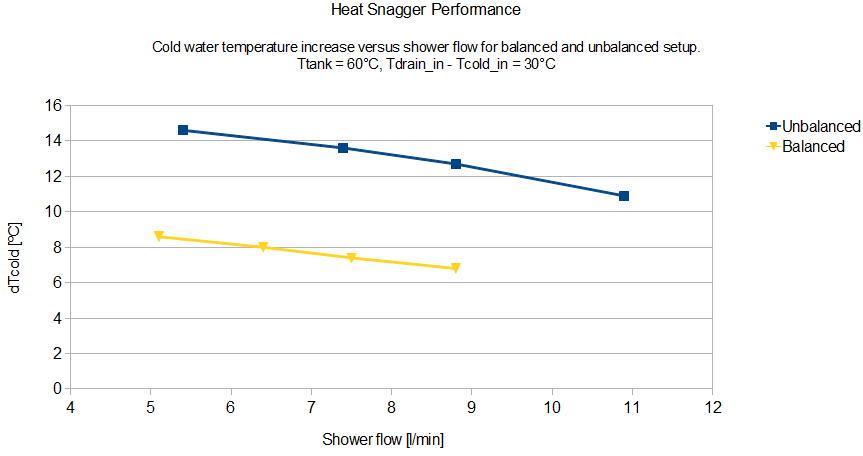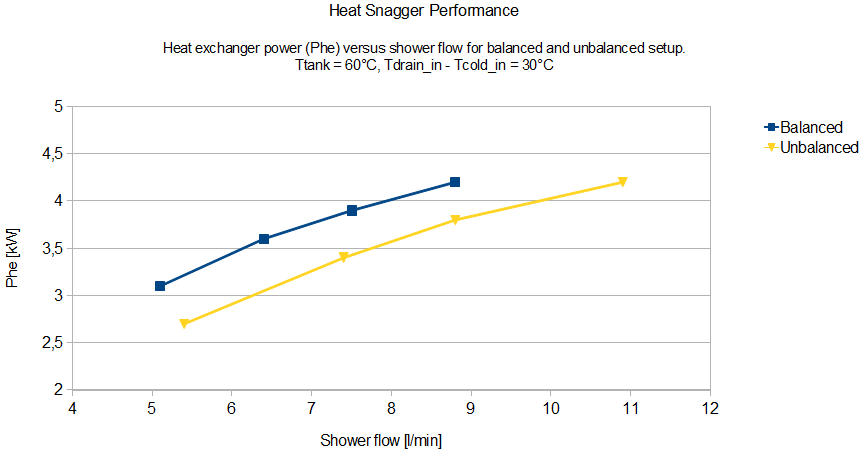From the lab:
Using the setup described in one of the previous news items, we have carried out performance measurements on one of our HeatSnagger prototypes. This was done for both unbalanced and balanced setup, and for different flow rates. (For an explanation of the difference between balanced and unbalanced, please refer to our page on Installation Alternatives.)


The top figure shows the temperature increase of the cold water (dTcold), the bottom figure presents the power transferred in the heat exchanger (Phe) as calculated from dTcold.
The following test conditions were used:
• Temperature difference between drain water and cold water flowing into the HeatSnagger regulated to 30°C,
• Cold water temperature of 12°C
• Hot water temperature of 60°C.
Notice the following:
• dTcold goes down for increasing flow, whereas Phe increases.
• The balanced setup shows lower dTcold but higher Phe as compared to the unbalanced setup.
These effects can be explained by considering the following:
• The power transferred in a heat exchanger goes up when the speeds of the streams increase.
• This effect is non-linear by nature, meaning that a two-fold increase in speed gives a less than two-fold increase in power.
• For example, when the flow increases from 5 to 10 l/min (100%), the power goes up from 2.5kW to 4kW (60%) and dTcold drops from 15°C to 12°C.
A 4kW power transfer in the heat exchanger will save you 4kWh of energy for every hour of showering.
